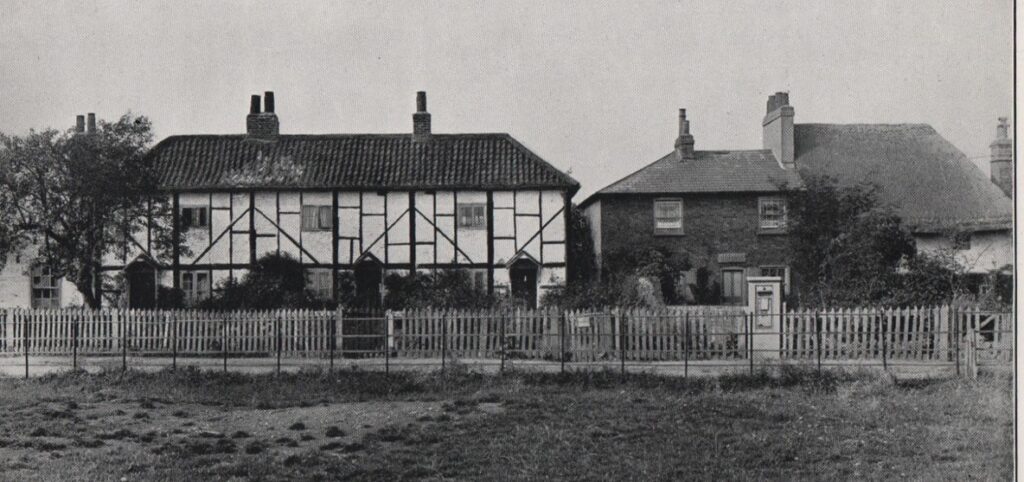By Nick Pollard
The Queen Mary reservoir is a substantial landmark in this area, its embankment towering over the flat Middlesex countryside surrounding it. No doubt some of you will have walked round the top of it, sailed on it, or even flown over it when leaving Heathrow, and have seen what a huge expanse of water is con-tained within its walls.
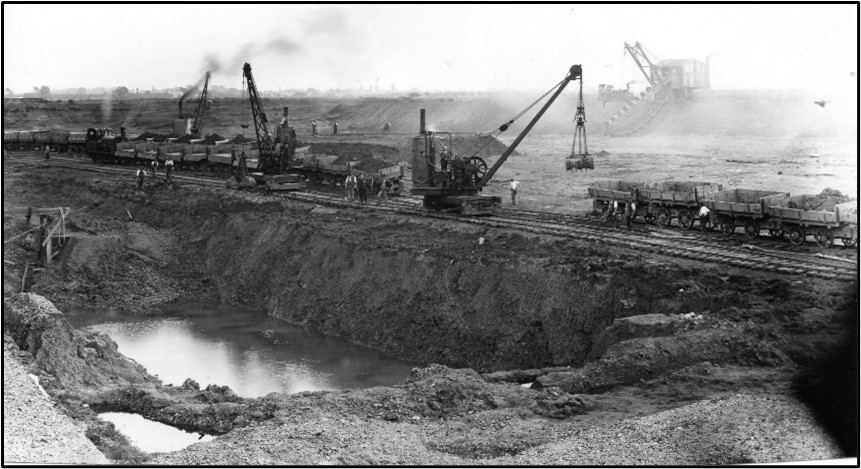
It had its origins in the formation of the Metropolitan Water Board in 1902, which took over from a group of private water companies, and which proceeded to invest in increasing the supply of clean water for the expanding metropolis of London. Following on from the Staines reservoirs of 1904, what was then called the Littleton reservoir was authorised in 1911. Water was to be taken from the Thames just below Penton Hook, pumped to the treatment works at Kempton Park, and then on to storage reservoirs in north London. The area selected was Littleton Common, which ran north from the small village to the Staines Road.
Construction began in 1915, but soon after work started, a pocket of ‘running sands’ was found to the west of the site, which meant that the nec-essary trenches could not be excavat-ed. The result was that the design was ‘squeezed’ to keep the same capacity, and extended further south than origi-nally planned, swallowing up most of Littleton green and half the houses in the village.
The method of working was to com-pletely clear the site, including the buildings of Littleton, then excavate a trench down to the underlying clay all the way round the perimeter. This was filled with ‘puddled’ clay, then an embankment raised, through which the clay trench was continued, to make a giant waterproof basin.
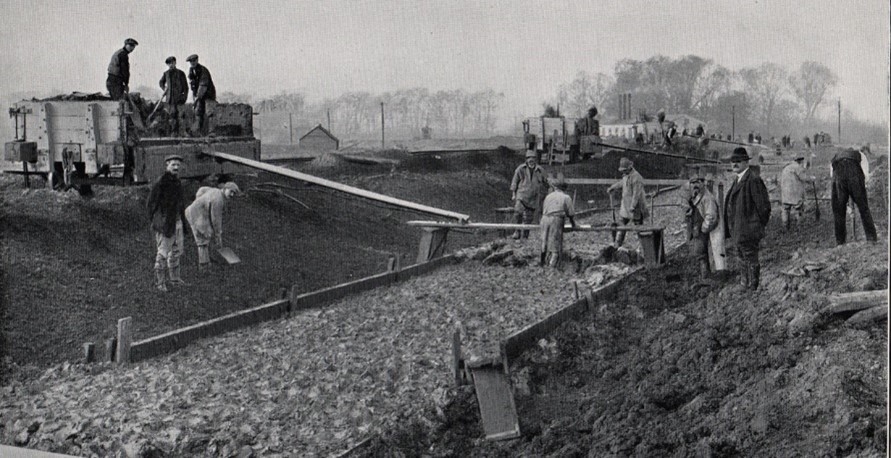
By 1916, the demands for manpower for the First World War meant that the work had to be suspended. It resumed in 1919. At this time my grandfather Frederick Pollard came back from the army and went for a job at the reservoir, but the foreman wanted a £1 bribe to give him the job, which he didn’t have – so no job! The work was hard – although the excavation was done by large steam powered excavators and the spoil loaded into wagons which ran on a temporary railway around the site, the clay packed in the trenches had to be trodden in by men with sacking wrapped round their feet!
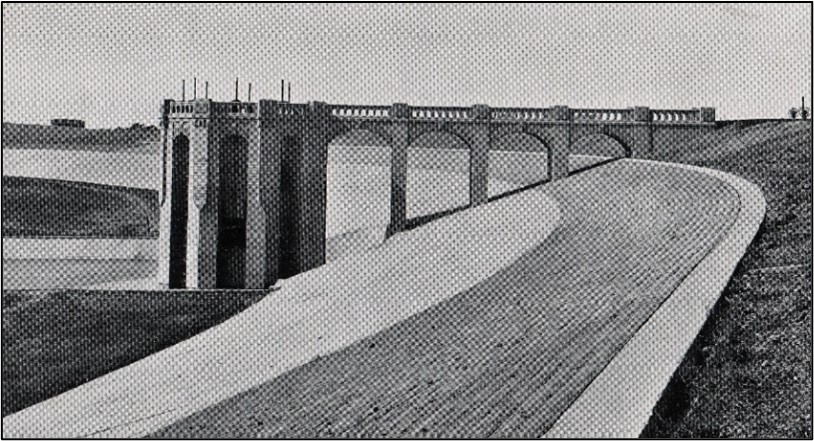
Once the embankment had been completed, the water inlet and outlet towers were built, and the interior faces of the perimeter were lined with 6 inches of slab concrete below the future water level, with concrete blocks made on site laid above this. An aqueduct was constructed from the Thames at Laleham, and a building to house the necessary steam engines and pumps was built on that side of the reservoir. It had a tall chimney, but that was demolished after new electric pumps were later fitted, although thankfully the original pumps remain in place.
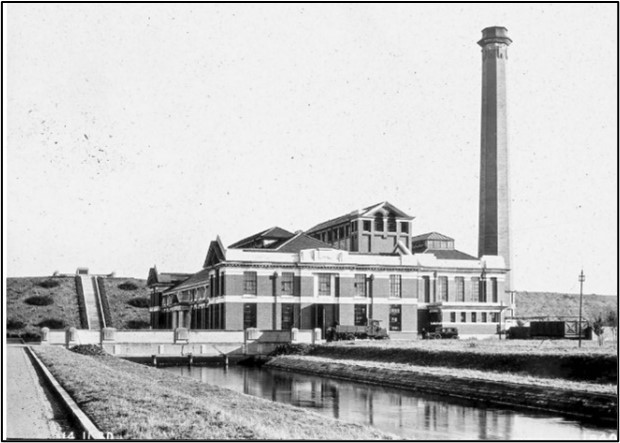
When completed, the reservoir covered 732 acres and had a circumference of 4 miles. It could hold 6,750 mil-lion gallons and was the largest free standing reservoir in the world at the time The total cost was £2,050,000. It was officially opened by King George V and Queen Mary on 13th June 1925, and was named ‘The Queen Mary Reservoir’.
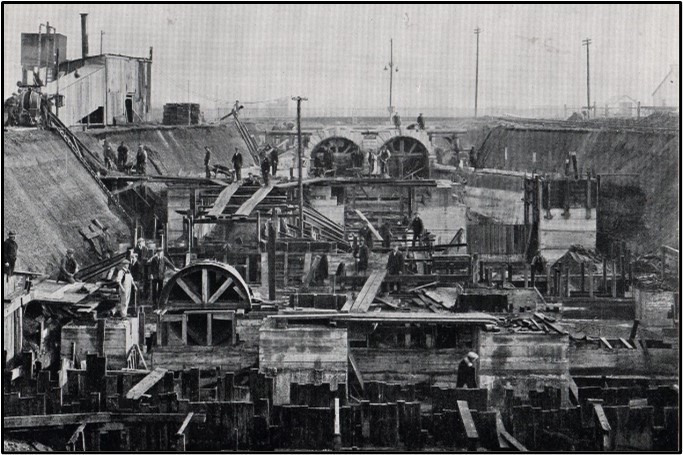
If you would like to join Sunbury and Shepperton Local History Society, please see our website www.sslhs.org.uk. We have regular talks, advertised in Sunbury and Shepperton Matters.

